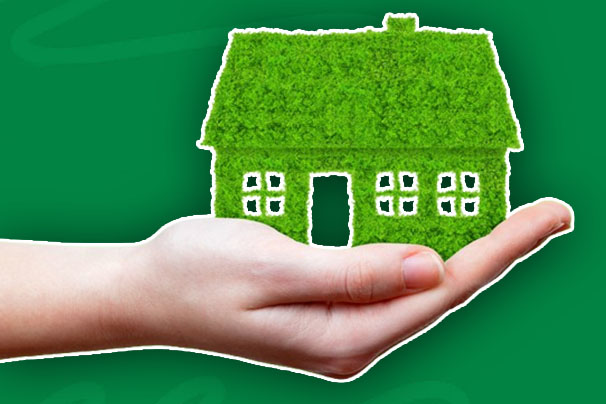In an age where environmental preservation is highly concentrated, the concept of green mortgage has gained fame. But what is a green mortgage? This is a type of home loan designed specifically to offer incentives and support to the renovation and purchase of homes with environmentally friendly or eco-friendly features.

With the increasing prominence of energy efficiency and climate change, green mortgages are a special way to chip into the conservational future while financial incentives benefit. In this article, we will be finding out what green mortgages are, how they work, the various types, and if they are worth the investment. Without any delay, let us dive into it.
What Is a Green Mortgage and How Green Is It?
A green mortgage is also known as an eco-friendly mortgage or energy-efficient mortgage (EEM). Furthermore, it is a financial product created to support and encourage the renovation and purchase of homes that meet certain environmental standards.
Apart from this, this type of mortgage provides advantageous terms like higher borrowing limits and lower interest rates to borrowers who are interested in investing in sustainable or energy-efficient home improvements.
As for the “green” part of this mortgage type, it is the environmental performance of the home. This can include the use of sustainable materials, energy efficiency, and reduced carbon footprint. However, keep in mind that this mortgage type is not green in itself.
Types of Green Mortgages
As mentioned earlier, green mortgages give financial incentives to homeowners in different ways. The major types include:
Green Home Improvement Loans
This type of green mortgage loan provides homeowners with the finances for energy-efficient improvements. For instance, insulation or solar panels.
EPC-Rated Mortgages
Also known as an energy performance certificate-rated mortgage, this type of mortgage provides low interest rates to homeowners who purchase or improve properties with a high EPC rating.
Retrofit Mortgages
This form of green mortgage provides extra borrowing to homeowners at a lower interest rate as well. Hence, if you are into energy-efficient improvements, you can qualify for a retrofit green mortgage.
How Does It Work?
How does a green mortgage work? This type of financial tool operates by offering beneficial loan terms to borrowers who buy or renovate houses with eco-friendly features. Some of these terms may include additional financing for energy-efficient upgrades, lower interest rates, or higher loan limits.
The objective of this is to give incentives to homeowners to invest in worthwhile or energy-efficient improvements that reduce their utility bills and impact the environment.
Pros and Cons
Here are some of the benefits and drawbacks of taking out a green mortgage:
Pros
- Increase borrowing capacity.
- Low interest rates.
- Possible tax incentives.
- Mitigated energy bills.
- Positive environmental impact.
- Better comfort.
- Increased property value.
Cons
- Higher upfront costs.
- Possible low savings.
- Challenging eligibility requirements.
- Limited availability.
- Varied requirements.
- Market discernment.
- Complicated application process.
Which Homes Qualify for a Green Mortgage?
To find out if your home is qualified for a green mortgage, here is how to find out. An EPC (Energy Performance Certificate) quantifies or calculates how energy-efficient your house is. It also gives and sets a letter between A which is (the most efficient) and G (the least efficient).
As for newer homes, they tend to be less energy-intensive since they are built with modern materials. On the other hand, older homes tend to need more carbon-emitting energy to heat up.
Meanwhile, whenever a house is sold, built, or bought, an EPC is required and if you are unsure of yours, you can check online for your state’s database to find the energy rating of your home.
Is a Green Mortgage Worth It?
The answer to whether this mortgage is worth it or not is determined by different factors. For instance, you should consider the financial benefits of possible savings on energy bills, reducing the carbon footprint of your home, and the environmental impact of contributing to environmental conservation.
Apart from these, you need to consider potential increases in property value, the effect of energy-efficient upgrades, and your home value to future potential buyers. It is important to consider mortgages with tax incentives and low interest rates. In conclusion, make sure that your environmental values and financial goals are met to find out if the green mortgage is a good option for you.
How to Apply for a Green Mortgage
The application process for this mortgage is the same as applying for any type of home loan. Here is a general guide you can use to take out a green mortgage from any lender:
- Identify potential lenders.
- Prepare the necessary documents.
- Fill out the mortgage application form.
- Enter the details about the green features of the home and financial situation.
- Submit it.
- Your application will be reviewed.
- You might undergo an energy inspection and assessment.
- Wait for approval.
After reviewing the terms of the mortgage and finalizing the loan, to close the loan, finish the closing process by paying associated fees and the mortgage agreement.
FAQs
What are the eligibility requirements for a green mortgage?
The eligibility requirements differ by program and lender. Generally, homes with certain green building standards, like LEED or ENERGY STAR certifications and energy efficiency standards. On the other hand, some programs need an energy inspection or assessment.
Can I use a green mortgage for any home improvement?
Green mortgages usually pay attention to energy-efficient improvements and upgrades. Common qualifying projects are energy-efficient windows, installing new insulation, or solar panels. Major renovations or improvements that meet green building standards can also be eligible.
Are there tax benefits associated with green mortgages?
Specific green mortgages come with tax benefits like energy-efficient deductions or upgrades associated with green building certifications. Meanwhile, you can check your tax advisor or lender to learn more about the available benefits.
How can I find green mortgage lenders in my area?
If are experiencing difficulties finding a green mortgage lender, you can begin by researching online lenders that provide green mortgage programs. You can also reach out to credit unions or local banks and ask for recommendations from environmental organizations.



